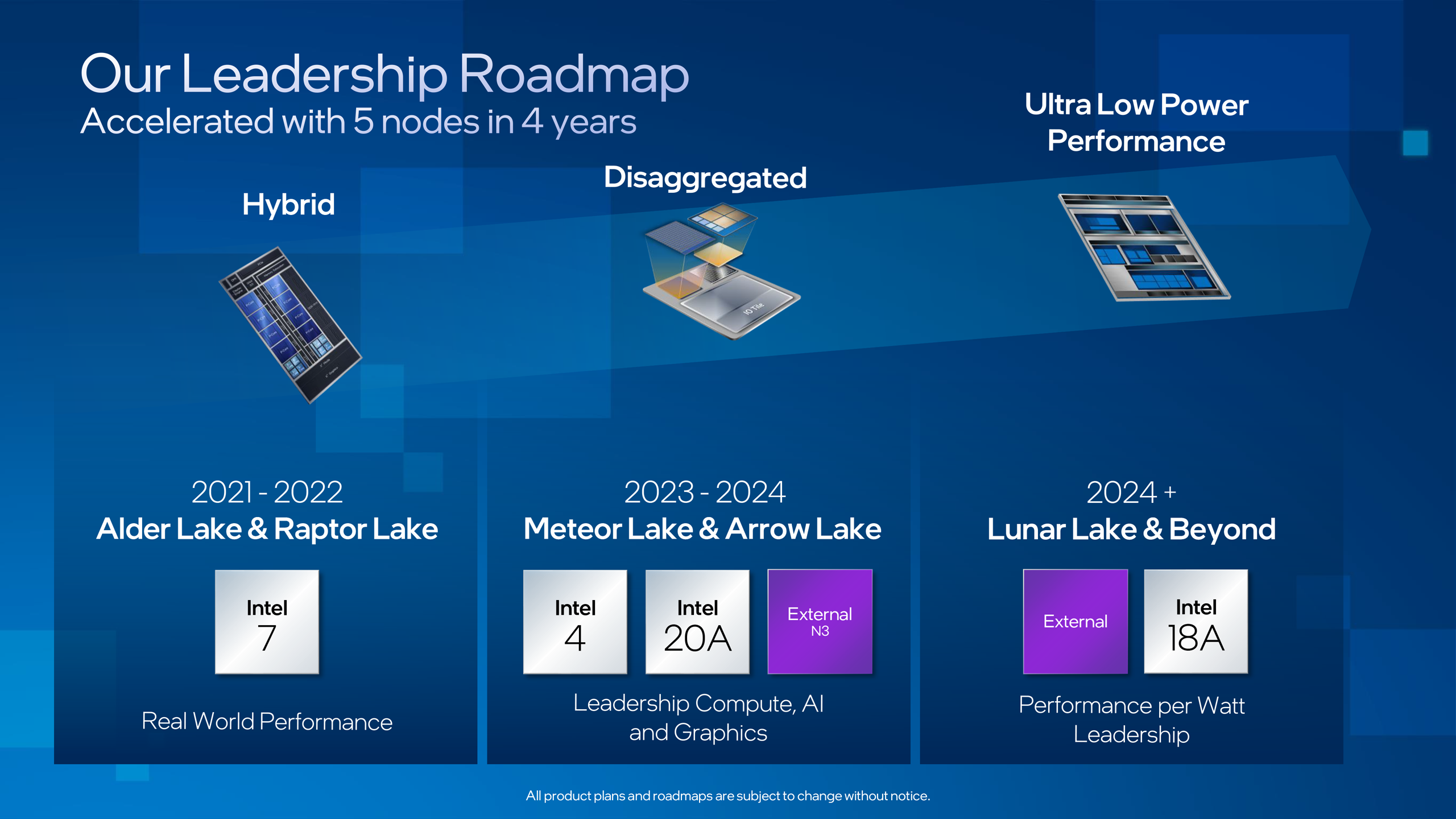Intel's Meteor Lake CPUs May Arrive With Ray Tracing Hardware
Rival AMD has had CPUs with ray-traced graphics acceleration for most of 2022.
South Korean tech treasure hunter Coelacanth’s Dream has dug up some interesting information about the integrated GPU that comes with Intel’s Meteor Lake processors. From sightings of new code patches for the Intel Graphics Compiler (IGC), the fishy tech poster has revealed that Meteor Lake iGPUs could have ray tracing support in hardware. Unfortunately, a potential negative is that the iGPU may lack Intel XMX (Xe Matrix eXtension) units.
Intel’s 13th Gen Core processors, codenamed Raptor Lake (RPL), are next up - and due quite imminently. However, in 2023, we think Intel’s 14th Gen Core processors, dubbed Meteor Lake (MTL), will cause quite a stir with several bold, advanced steps taken. Regular readers will know that the transition from 13th to 14th Gen Core processors will move from Intel 7 to Intel 4. That isn’t all, though, as we will see Intel’s first disaggregated design with a TSMC N3 tile under the heat spreader. It will be the GPU portion of the chip, and thanks to detective work from people like Coelacanth’s Dream, we have an ever-growing clearer picture of this iGPU.
In July this year, Coelacanth’s Dream discovered some Intel Linux patches, which suggested MTL’s graphics tile would feature the Xe-HPG/Xe-LPG architecture and up to 128 EUs produced by TSMC using its N3 fabrication process. Now we have sight of the new code patches for the Intel Graphics Compiler (IGC), some more deductions can be made regarding the GPU tile.
Probably most interesting is the patch indicator that suggests Meteor Lake’s iGPU will have ray tracing hardware. Intel LGA1700 CPUs, like Alder Lake and Raptor Lake, come with up to 96 Xe-LP EUs. However, Meteor Lake will have a Xe-HPG architecture GPU with more in common with the Alchemist / DG2 discrete graphics cards and might feature up to 128 or even 192 of these EUs. The ray tracing support feature was picked up in IGC, where it sets ray tracing support to enabled if iGFX_meteorlake is detected. Moreover, Meteor Lake also seems to support hardware ray tracing in any app that helps the feature in Alchemist / DG2 or Ponte Vecchio.
Adding ray tracing support to its iGPUs is a welcome move from Intel, but it will only play catch-up with AMD, which has had its Ryzen 6000 (Rembrandt) processors with RDNA2 iGPUs on sale throughout most of 2022.
Moving along to the issue of Meteor Lake’s iGPU architecture missing XMX units. It is observed through the IGC patches that MTL doesn’t support DPAS (Dot Product Accumulate Systolic) instructions that rely on XMX units. It hints that the iGPU doesn’t have XMX units, which could negatively impact the acceleration of Intel XeSS, for example. On the desktop, a Xe-core features 16 XMX units which can do 128 FP16/BF16, 256 INT8, or 512 INT4/INT2 operations per clock. They also accelerate XeSS, but this scaling tech has a fallback to DP4a instructions mode.
Lastly, it is worth remembering that Meteor Lake CPUs are quite a significant change for Intel and may face some teething trouble. About a fortnight ago, we reported that Meteor Lake’s 3nm GPU Tile production at TSMC might have been postponed. It could be that Intel has decided to switch to the newer N3E process, but it is hard to say from the sources whether this is indeed the case or some trouble is brewing.
Get Tom's Hardware's best news and in-depth reviews, straight to your inbox.

Mark Tyson is a news editor at Tom's Hardware. He enjoys covering the full breadth of PC tech; from business and semiconductor design to products approaching the edge of reason.
-
SiliconFly Meteor Lake's GPU is a not a iGPU but a tGPU. A separate tile based on Arc DG2 Alchemist. Not sure how performant it's gonna be compared to competition, but it's definitely going to be a LOT better than the current integrated GPUs. It shud be able to handle ray tracing comfortably at 1080p @ 60fps in most games with the upscaler enabled.Reply
And that's very bad news for competition.
